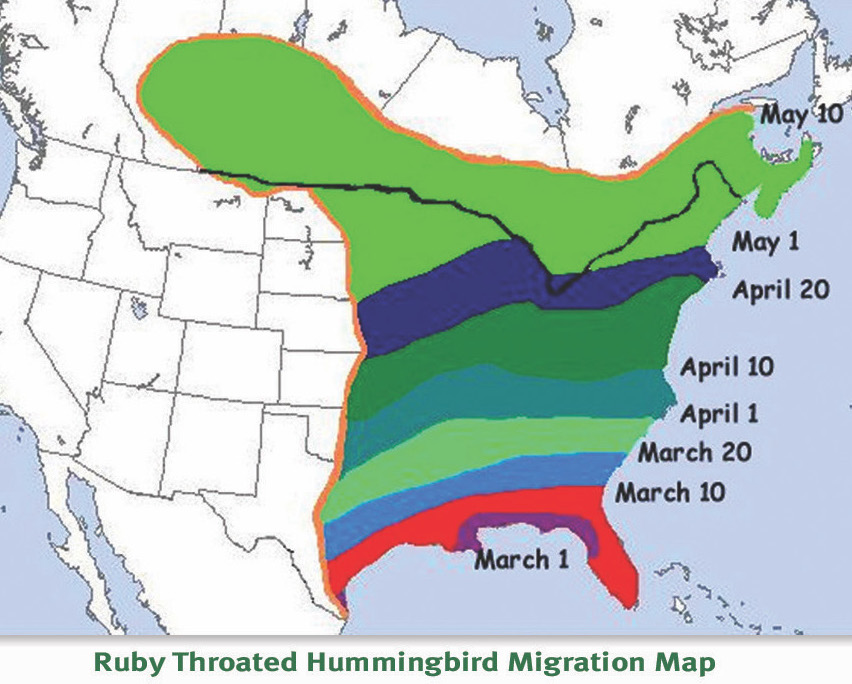-
Bluebird House Scouts are Out and About!
Once cherry blossoms and crocus bloom… you can bet the search is on for the perfect bluebird house! Even though it’s February and still frosty, bluebird courtship is underway. Once they pair up, the search is on for the best bluebird house with single a pine needle or piece of straw to claim their favorite.
What’s the best bluebird birdhouse? Start with a NABS approved design. The North American Bluebird Society actually rates bluebird houses for appropriate features such as the ability to monitor nests, ventilation, drainage and clean-out, correct hole size and floor space. Distance from floor to entry is also a factor as nestlings become easy prey for predators should the entry be too close to the birdhouse floor.
Monitoring is recommended so long as parents and nestlings aren’t disturbed. It’s a great and educational way to get the family involved and get kids outside! Just a quick nest check can help with successful fledges and it only takes a few seconds.
Avoid checking at dawn and dusk when parents are busiest feeding babies. Always tap on the birdhouse first to avoid startling parents. With front- or side-opening bluebird houses, avoid nest checks once babies are about 12 days old as it could cause premature fledging. Never handle eggs or touch nestlings and most of all… don’t pester the birds.
The innovative bluebird house shown is the Gilbertson Nest Box and blues just adore it! Rather than a door for monitoring, the PVC coffee can-shape cavity pops on and off the roof’s underside via two pins. Simple to monitor, just squeeze the top of house with both hands to elongate and release the birdhouse part. Take a peek at eggs or nestlings and pop the house back onto the roof in the same fashion. The Gilbertson is NABS approved, withstands weather and deters house sparrows with its overhang roof.
For information on becoming a bluebird landlord- please visit Sialis.org for more comprehensive answers to all bluebird questions!
-
Moms Deserve the Best Birdhouse for Mother’s Day
Hard working Moms deserve the best for Mother’s Day… simply because they ARE the best!
Whether human, winged or 4-legged, Mom works harder than anyone else in the family unit. Let’s face it- if it were up to Dad to lay eggs, there would be no babies! The same is widely said of humans too 🙂
Although bluebird dads participate equally in the rearing of nestlings- it’s mom who lays the eggs, and mom who has the featherless brood patch for incubation.
Yesterday was National Bird Day and although we may have missed it… we celebrate backyard birds everyday for the sheer joy and calming effect they have when one takes the time to observe. Chaos is lifted, you’re absolutely unplugged, no tracking or pop-up ads (don’t you just despise them?)
While Dad gets all the vivid color and glory in the avian world, Mom is really the superhero… what’s up with that? It’s true of cardinals, bluebirds, grosbeaks, orioles and so many other resident and migratory fliers who visit our yards.
Not all birds use houses, some may never even visit your feeders. That’s not to say you can’t offer the best birdhouse for those who do!
What makes it the best? First and foremost- it’s the one you will maintain! Be it a birdhouse, feeder or birdbath- they must be monitored and kept clean for birds.
A leaky birdhouse sitting with bug-infested rotted nest is of no use at all. A bird feeder with nasty seed only serves to spread mold spores and bacteria which can be fatal to birds in the form of respiratory disease. This is very common among finches, pine siskins and the like.
A birdbath with no water… say what!? Yup, that’s what your birds will say to that one 🙁 Because we do attract birds in unnatural populations, it’s our responsibility to keep them from becoming sick.
So what else makes the best birdhouse-bird feeder? Functionality, for sure! Feeders should be easy to clean and they should keep seed dry. Birds should have easy access as well. Houses should have the proper entry size for the birds you’re wanting to host and of course proper ventilation and drainage.
While a chickadee needs only 1-1/8″ hole size, an Eastern bluebird requires 1-1/5″ entry. And so help us- if we find the neighbor who has the birdhouse with gigantic gaping hole… because this is where dreaded starlings have decided to take up residence. And they come to our yard to feed!
Last, handmade designs will always make for timeless and stunning gifts! Crafted by artisans who have a passion for wild birds, the unique birdhouse-bird feeders are more than just objects. Also serving as garden decor, these pieces display one’s talent and soul that went into creating the art. Mediums vary from wood, to copper, pottery and more, some are even one-of-a-kinds and signed/stamped by the artist. All are bird-approved- making them by far, the best birdhouse gift for Mother’s Day… and for the mama birds around her place too!
-
Easter Egg-Stravaganza Inside Birdhouses!
Happy Easter and Happy Passover!
Things are greening up nicely, the promise of spring and re-birth. It’s a most exciting time in the garden and for backyard birders! Cabin fever prevails and folks are itching to get outside and start digging in the dirt. We’ve even refreshed our age old blog by redesigning for this century… yes, it’s that old, we’ve been around a good while now because the passion for birding still exists.
Rough patch of weather for the nesting birds in our North Georgia yard. The usual suspects; a chickadee nest with 5 eggs, bluebirds with 4 nestlings in the Gilbertson box in back, bluebirds with 5 eggs in front, white breasted nuthatches in back and their smaller cousins- brown headed nuthatches in front.
This is not to mention those who don’t use birdhouses; cardinals definitely have a nest as they’re back and forth from mealworm feeders. Oh yes, we let everybody have some worms…except starlings, the dreaded nuisance birds are back but this too shall pass.
The Boston ferns are up with nest starts in 2 of them. Don’t want birds nesting in your ferns? Simply avoid offering the habitat and forego the ferns this year. Should you enjoy seeing a family of house finches so close to home (as we do), simply take the fern down to water by submersing the bottom in a bucket of water. Take care not to get their nest wet. Everyone’s been very busy staking out territory and claiming birdhouses!
We headed over to the local alpaca farm last week to score tons of fur for our spring “free nesting material promo”.
Freshly sheared, the alpacas are so sweet and such a joy to hang around with while chatting with owners of the farm.
After an unusually wet winter in the southeast, nesting activity seemed to get a late start. Warm days of April have been fab, but the last two days have been freezing and wet. If you’ve still got old man winter hanging around… thankfully it won’t be too long!
Goldfinches have turned their drab colors into electric yellow, molting in what seemed to be overnight. Hummingbirds arrived about 2 weeks ago (the only good thing about tax time). And just today, two indigo buntings were spotted at feeders. Migration’s in full swing… and it’s coming to a theater near you soon! Not sure who’s arriving when? Check Journey North.org to track migratory progressions, great website with helpful info!
Are your hummingbirds back yet? Social media is a great place to find birding groups with lots of Q&A’s posted. The info may not always be correct though! Most times, others will chime in to offer their expertise and advice, one could learn much if new to attracting and hosting bluebirds or the first season offering hummingbird feeders. Here’s a general map of when to expect the tiny sprites, but JourneyNorth provides more detailed info.
We’re hoping to catch a few orioles (who isn’t?), so grape jelly and oranges are on the menu. Rose breasted grosbeaks are a sure sign, but this year Cornell Lab reported the birds were spotted pretty far north of normal range during winter. A Baltimore oriole was made famous on social media as he spent his winter in Wisconsin! The host kept the bird fed with oranges and grape jelly, giving general info on his condition since this past January. He hung around all winter and is doing just fine!
Other “outta sorters” were Carolina wrens in Minnesota. This pair actually caught the attention of The Audubon Society for filming and research. Ranges are changing and it’s interesting to see who’s where at different times of the year.
We wish you a happy holiday and happy spring with lots of busy birding activity around your place!

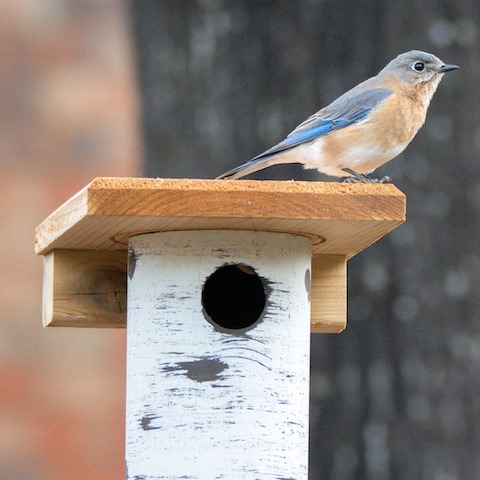


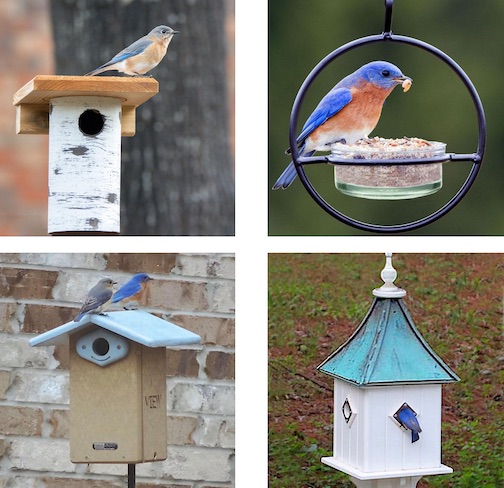



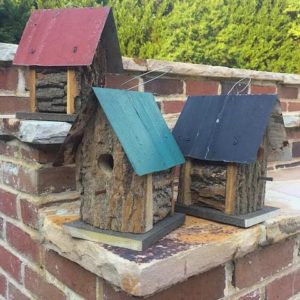
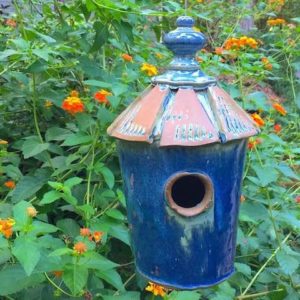

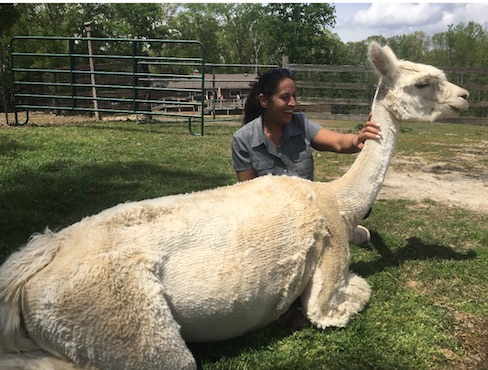 Freshly sheared, the alpacas are so sweet and such a joy to hang around with while chatting with owners of the farm.
Freshly sheared, the alpacas are so sweet and such a joy to hang around with while chatting with owners of the farm.